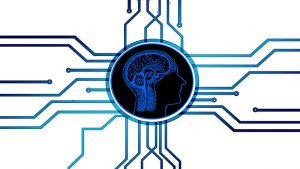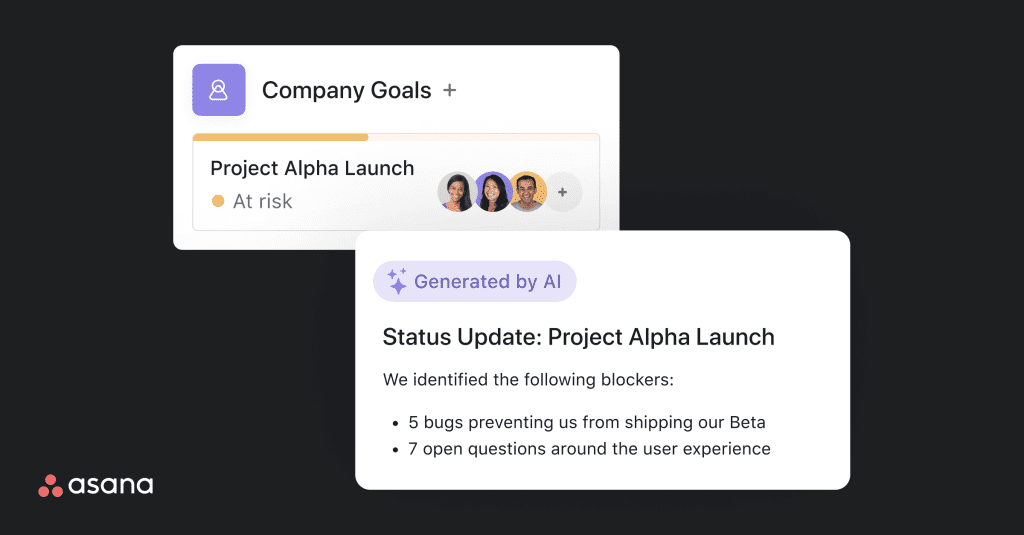
Dustin Moskovitz, Co-Founder and Chief Executive Officer, Asana, commented, “Asana was made for this moment. We’ve been laying our AI foundation and product building blocks for years, and the recent developments in AI play right into our core strengths. With AI and the Asana Work Graph supercharging each other, we can move even faster and offer more powerful capabilities to make better decisions and work smarter together.

“As an AI-first company, we see a future where AI and human ingenuity combine to radically improve the lives of individuals and how teams work together, unleashing the full potential of every business and organisation.”
Some new features are only available in beta, indicating that Asana has a roadmap for further integrations with its new AI capabilities. Asana shared that more features are still in closed beta, adding a new Large Language Model and generative AI functionality powered by OpenAI.
The capabilities are built on Asana Intelligence and include more than just generative AI capabilities. The new features fall into three broad areas: accelerating decision-making, improving productivity and maximising impact.
Every new feature also adheres to the AI Principles that Asana has codified for its research and development teams. This step, overlooked by other firms, creates a solid foundation. It should also help ensure that the developments do not fall foul of legislation potentially imminent in some regions, such as the European law on Artificial Intelligence. In the US, there is no planned legislation. However, the White House issued a Blueprint for an AI Bill of Rights.
Asana AI capabilities
Accelerate decision making
Generally available now, goal-based resource management forecasts shortfalls and provides insights and recommendations on how resource managers can resolve issues. For example, if the customer success team has too much work to deliver, the AI assistant will prompt with a message saying, “Customer Success team is understaffed, consider reallocating resources to hit your goal.”

As the insight is provided in context, users can rapidly action the proposed actions. However, the AI does not yet appear to suggest exactly what options a resource manager may have in this instance. There is an assumption that other members of the team have available time. Perhaps Asana will improve this feature in further releases.
Available in beta is a new health check that will provide a status update on specific projects, highlighting where a project is at risk rather than having the project manager drill down to identify the issue. The screenshot attached highlights an example. This new feature makes it easier for organisations to remove barriers to progress on company goals or projects.
Improve productivity
There are three new features in this domain. Self-optimising workflows are generally available now. The AI suggests additional rules that may help the flow of existing workflows.
There are two features available in beta. The first leverages generative AI that enables users to adjust text created by users, improving it across two flexible dimensions. Users can decide where on a scale of detailed-concise and direct-polite they want their communication to be, and the AI will adjust the grammar appropriately and provide a suggested, revised text to use.
Instant summaries transcribe and interpret meetings and provide a summary of the key points, create tasks based on the actions raised during the meeting and provides highlights from the themes of the meeting.
Maximise impact
Available in beta, Ask Asana Anything provides a natural language interface that enables users to pose any question about project progress relating to data held on the system. This should help free up time for project managers and team leaders to fend off questions on progress. However, it will rely on data being kept up to date.
Simple questions could include “Is this project on track” and the answer provided by the AI might be “There ate 3 milestones that are overdue, putting the project at risk”. What isn’t clear from the information provided is that the person asking the question can quickly drill down into those three milestones.
The final feature, also in beta, is the Work organiser. This feature suggests and can autogenerate custom fields, smart rules, and suggestions to add structure to projects.
Customers are already enthusiastic about the new Asana Intelligence features. Rob Woolley, VP of Technology Operations at Benevity, commented, “I’m incredibly excited about our participation in the Asana Intelligence beta and the possibilities it will unlock for our teams at Benevity. These capabilities will enable us to work more efficiently than ever, allowing us to better fulfil our mission of powering purpose-driven business.”
More information will be available for customers and prospects that sign up to watch a live demo. However, no date is available for this, and it is unclear whether it will also be available on demand.
Asana AI Principles
Asana also published its five Guiding Principles for human-centred AI. There are reproduced below in full.
- AI should help people achieve their goals: We focus on helping individuals and teams achieve their goals and helping organisations deliver on their mission faster. AI should be used in service of augmenting, supporting, and celebrating people’s contributions like never before. Humans should always set the destination; AI is a tool to help them get there.
- We design for human + AI teams: AI has joined the team. We see enormous potential for AI to help teams to work together more effectively and efficiently. We will prioritise our efforts towards fostering the right workflows and partnerships between people and AI—catalysing human-AI teamwork and ultimately empowering people.
- People are accountable for decisions: With Asana, AI will assist and enhance human decision-making. However, we believe accountability rests with people and will design our product accordingly. We also believe in providing people with choice and control over the role of AI in their work.
- We are committed to safety—in the short and long run: We believe AI will be transformative for humanity and for our mission, but we will balance speed with responsibility. In the near term, we will prioritise safety and security with AI providers. And we’ll take the same approach while developing AI solutions. In the long run, we are motivated to ensure AI remains aligned with human values and objectives in Asana.
- We promote transparency, in practice and in product: We commit to being open and clear about our partnerships, security, data collection, data protection, and management practices. Transparency is also fundamental to our product ethos. We will build solutions that lead AI and humans alike to unpack their thinking and assumptions in order to strengthen our collective thought processes, foster trust, and build on each other’s ideas.
Enterprise Times: What does this mean
Asana has delivered an impressive set of new features. There is room for further improvements, and it will be interesting to see how far Asana has taken the use of AI to provide a way of actioning the insights provided. While the principles align with the White House print broadly, it omits Data privacy, which Asana covers elsewhere.
However, while it advocates transparency, of AI, with the screenshots provided, it does not indicate how users can uncover how it reached the decisions it did, though the thinking behind the insights may be inferred.


























